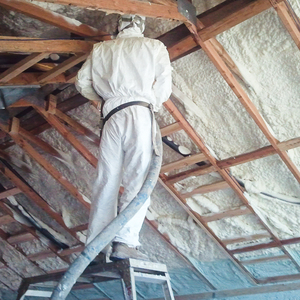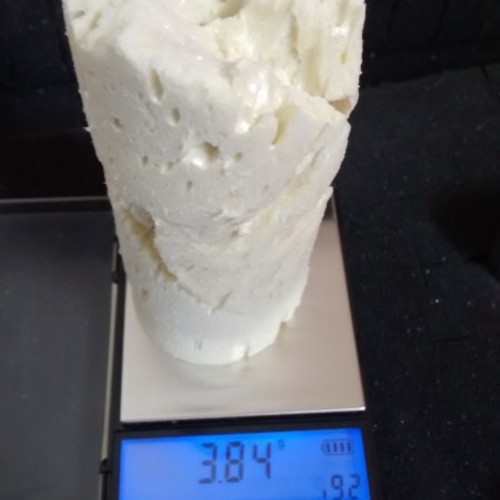
Spray foam insulation that continues to give off an unpleasant odor longer than it should has been the subject of a number of posts at GBA over the years as homeowners shared their concerns about health and air quality.
In a recent Q&A post, a reader named Gespo relates his own insulation “horror story” in hopes of getting some advice. The work took place in the attic of Gespo’s Washington, D.C., home after the existing vermiculite had been removed from the attic floor. A contractor sprayed 4 in. of closed-cell foam into the roof and gable-end walls, originally telling Gespo that the foam components were made by Natural-Therm but later correcting himself to say it was BASF Spraytite.
“The guys spraying failed to use proper ventilation during application, despite my repeated questioning of them and the company office,” Gespo writes. “They assured me that 24 hours with the windows open and bath fans running would be plenty of time to remove the foam odor. Of course, it wasn’t.”
The company eventually set up a fan in the attic to circulate air. The air quality improved, and the foam manufacturer assured Gespo that despite a failure to follow its ventilation guidance during installation the problem should go away.
“I’d like to find a third party who specializes in inspecting this work who can help me get a grasp on whether ventilation was the only mistake, or if there are underlying problems with the foam,” Gespo says. “I’m probably overreacting, but I’ve got an infant who has to sleep right below this stuff, so I’m not sure I’ll even be fully satisfied just by the smell greatly decreasing.”
Is Gespo a worrywart, or does he have legitimate grounds for concern? That’s the topic for…
Weekly Newsletter
Get building science and energy efficiency advice, plus special offers, in your inbox.

This article is only available to GBA Prime Members
Sign up for a free trial and get instant access to this article as well as GBA’s complete library of premium articles and construction details.
Start Free TrialAlready a member? Log in















7 Comments
Is there another material or technique used in building that can cause these un-remediatable effects? Although these problems appear relatively rare, it's still an awfully big risk when the consequences can be so large.
I'm not advocating we should stop using spray foam, but a bit like general anesthetic, people should be made aware that bad outcomes are possible.
Malcolm: It seems to me that, given the known risks, let alone what we don't know about long term exposure, spray foam should be used only if there's no alternative. And certainly shouldn't ever be used in new construction where non foam options exist.
Requiring installers to wear hazmat suits and occupants to leave home during installation sure suggests that foam is unsafe.
VOCs at 1200 parts per billion? Is there any good science telling us what exposure is safe? Here in Maine, people are going nuts about PFAS in drinking water at ten parts per trillion.
Stephen,
Especially, as you can attest from experience - it's not that hard to build a really well performing house without it.
I'm looking at getting my attic spray-foamed soon. Are there measurements I should take beforehand (e.g. some kind of VOC test) beforehand to establish a baseline in case this becomes an issue for me?
If you want to see some of the possible consequences when spray foam is done wrong, a few examples are given on this CBC Marketplace investigation: https://www.youtube.com/watch?v=0Hh5MYv7lWc
Spray foam may seem like a "miracle" product now for thermal, moisture and air control... but in its time, asbestos was also a "miracle" product (insulative, fire-proof, cheap). I suspect there may be an industry for remediating spray foam in the future once the health effects are known... the people installing it are wearing full hazmat suits and respirators, and 24hrs later it is "safe"? And it will of course be incredibly difficult to remove.
We are thinking of having a cathedral ceiling put in our greatroom. We live in upstate NY (zone 5a). Our contractor is suggesting closed cell spray foam insulation as the only choice, however, I am concerned about using these chemicals.
Are there other good choices of insulation for this? Thanks.
McLola,
There are a variety of different ways to successfully build a cathedral ceiling. This article lays out the alternatives: https://www.greenbuildingadvisor.com/article/five-cathedral-ceilings-that-work
Log in or become a member to post a comment.
Sign up Log in